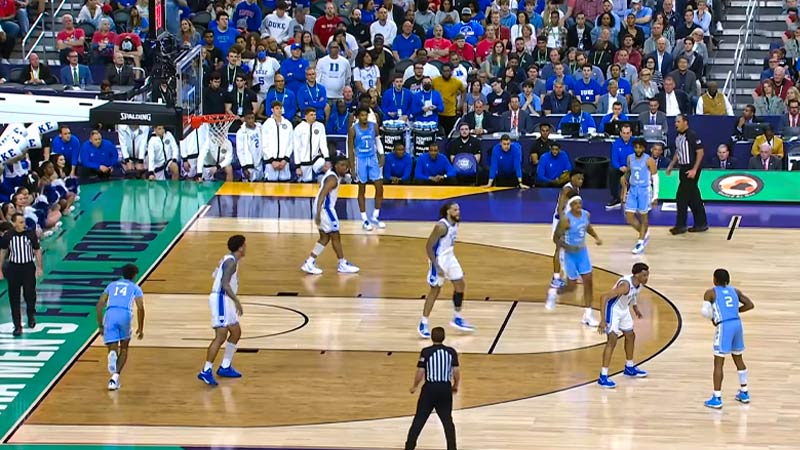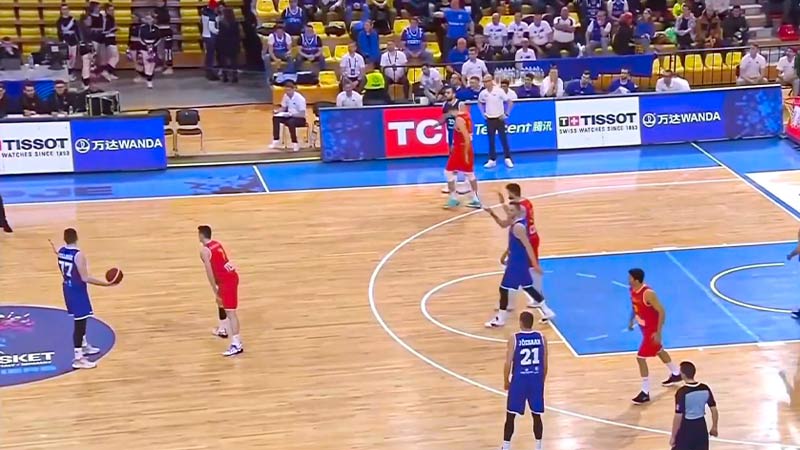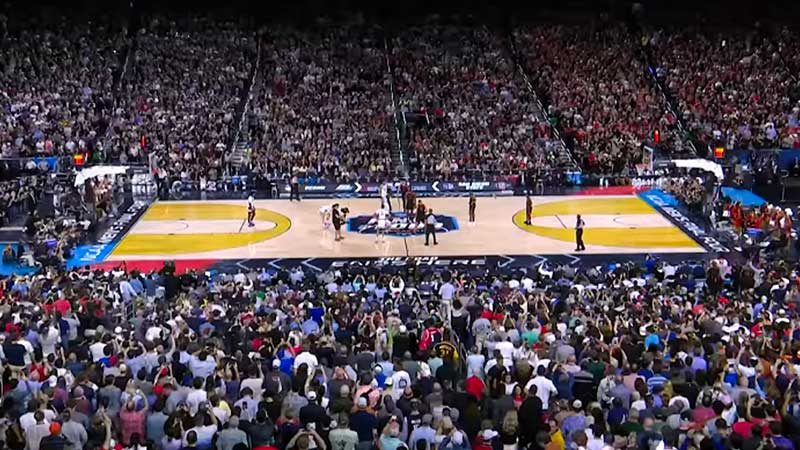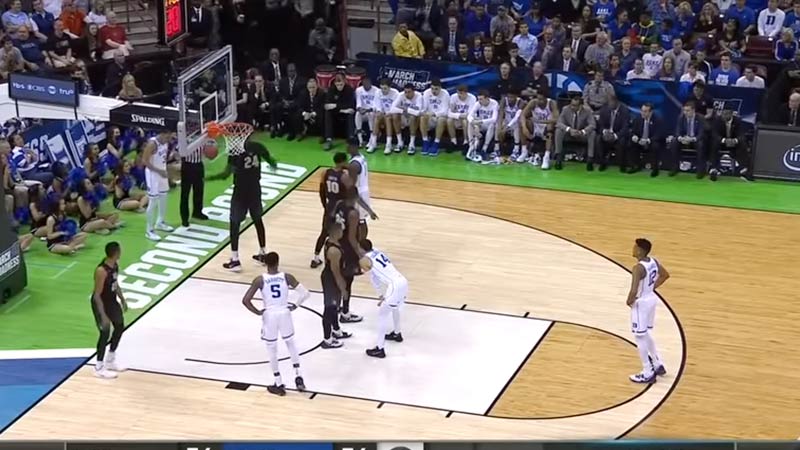Basketball is a game filled with technical terms and rules that can sometimes be confusing for newcomers.
One such term is “backcourt.” If you’re new to the sport or looking to deepen your understanding, this article will shed light on what backcourt means in basketball.
We’ll explore the definition of the backcourt, identify the players who occupy this area of the court, discuss backcourt violations and their consequences, highlight the differences between the frontcourt and backcourt, and provide some valuable tips to avoid backcourt violations.
By the end of this article, you’ll have a comprehensive understanding of the backcourt in basketball and how it influences the game.
What Does Backcourt Mean in Basketball?
In basketball, the backcourt refers to the area of the court that encompasses the defensive half of the playing surface. It extends from the baseline, where the basket is located, to the midcourt line, which divides the court into the frontcourt and backcourt.
The backcourt is where the defensive players primarily operate, guarding the opposing team’s backcourt players and preventing them from advancing the ball.
It is also where the offensive team faces the challenge of avoiding backcourt violations when transitioning the ball from the backcourt to the frontcourt.
The concept of the backcourt is essential for players to execute plays effectively and adhere to the rules of the game.
Who Are the Backcourt Players in Basketball?
In basketball, the backcourt players are vital members of a team, typically occupying the guard positions. Let’s take a closer look at the roles and responsibilities of the guards and the specific positions they play within the backcourt.
Point Guard: The Floor General

The point guard is often considered the leader and floor general of the team. They are responsible for initiating the offense, setting up plays, and distributing the ball to their teammates.
Point guards possess excellent ball-handling skills, court vision, and decision-making abilities.
They are adept at reading the defense, identifying passing lanes, and creating scoring opportunities for their teammates. Point guards are often quick, agile, and have exceptional basketball IQ.
Shooting Guard: The Scoring Threat
The shooting guard, also known as the off-guard or two-guard, is primarily focused on scoring and shooting.
They are often the team’s primary perimeter scoring threat and excel at shooting from mid-range and beyond the three-point line.
Shooting guards are known for their scoring prowess, ability to create their shots, and off-ball movement. They are often skilled at catching and shooting, as well as driving to the basket to finish strong.
Shooting guards also contribute to the team’s defense by guarding the opposing team’s backcourt players.
Combo Guards: Versatile Backcourt Players
In some cases, players may possess the skills and versatility to play both the point guard and shooting guard positions. These players are known as combo guards.
Combo guards offer the advantage of flexibility and adaptability, as they can seamlessly transition between ball-handling and scoring responsibilities.
They can take on the role of the primary ball handler or act as a secondary scoring threat alongside another guard. Combo guards bring a blend of playmaking, scoring, and defensive skills to the backcourt.
Backup Guards and Role Players
In addition to the starting point guard and shooting guard, teams often have backup guards and role players who provide depth and support in the backcourt.
Backup guards are responsible for maintaining the flow of the game when the starters are resting or dealing with foul trouble.
They should be capable ball handlers and playmakers to ensure continuity in offensive execution.
Role players in the backcourt can contribute in various ways, such as providing defensive intensity, three-point shooting, or energy off the bench.
What Are Backcourt Violations?

Backcourt violations occur when an offensive team commits certain infractions while advancing the ball from the backcourt to the frontcourt. The violations include:
Crossing the midcourt line
Once the offensive team has established possession in the frontcourt, they cannot pass or dribble the ball back into the backcourt. If they do, it results in a backcourt violation.
Over-and-back
If a player in the frontcourt loses control of the ball, and it goes into the backcourt, the offensive team cannot retrieve the ball and bring it back into the frontcourt. Doing so will result in a backcourt violation.
What Is the Consequence of Backcourt Violations?
When a backcourt violation is committed in a basketball game, it can have significant consequences for the offensive team. Let’s delve into the repercussions of backcourt violations and understand how they can impact the flow and outcome of the game.
Loss of Possession
The most immediate consequence of a backcourt violation is that the offensive team loses possession of the ball. The opposing team is awarded the possession, and they gain the opportunity to take control and advance the game in their favor.
This change of possession can be a significant setback for the offensive team, as it denies them the chance to score or continue their offensive play.
Inbound Pass from the Sideline
After a backcourt violation is called, the game is resumed with an inbound pass from the sideline nearest to where the violation occurred.
The player designated to inbound the ball must pass it to a teammate within a certain time frame, usually five seconds, to keep the game flowing smoothly.
This inbound pass allows the defensive team to set up their defense and potentially disrupt the offensive team’s plans.
Loss of Scoring Opportunity
A backcourt violation robs the offensive team of a potential scoring opportunity. When a violation is committed, the offensive team forfeits their chance to make a play in the frontcourt, where they are closer to the opponent’s basket.
This can be frustrating for the offensive team, particularly if they had a well-executed play or a scoring opportunity in progress before the violation occurred.
Shift in Momentum
Backcourt violations can also lead to a shift in momentum during a game. Losing possession and giving the opposing team an advantage can create a swing in the game’s dynamics.
The defensive team gains confidence and momentum, while the offensive team may feel a sense of frustration or disappointment.
This shift in momentum can have psychological effects on the players and can influence the overall flow and outcome of the game.
Importance of Avoiding Backcourt Violations
Given the consequences associated with backcourt violations, it is crucial for teams to minimize these infractions.
Avoiding backcourt violations allows the offensive team to maintain possession, sustain their offensive rhythm, and continue their pursuit of scoring points.
By practicing proper court awareness, effective ball handling, and good decision-making, teams can reduce the risk of committing backcourt violations and keep the game in their control.
Differences Between Frontcourt and Backcourt

In basketball, the court is divided into two main areas: the frontcourt and the backcourt. Understanding the differences between these two areas is essential for players to execute strategic plays effectively. Here are the key differences:
Offensive responsibilities
The frontcourt is where most of the offensive action takes place, with players looking to score close to the basket. The backcourt players, on the other hand, focus on ball handling, playmaking, and creating scoring opportunities for the team.
Defensive roles
In the frontcourt, players are responsible for guarding opponents near the basket, protecting the rim, and rebounding.
In contrast, backcourt players typically guard the opposing team’s backcourt players, preventing them from advancing the ball and creating turnovers.
Court positioning
The frontcourt refers to the offensive half of the court, from the midcourt line to the baseline where the basket is located. The backcourt, conversely, encompasses the defensive half of the court, extending from the baseline to the mid-court line.
Tips to Avoid Backcourt Violations
To avoid backcourt violations and maintain control of the game, consider the following tips:
Court Awareness
Stay mindful of your positioning on the court and the location of the midcourt line. Be aware of your teammates’ positions to make accurate passes and avoid crossing into the backcourt.
Effective ball handling
Develop strong ball-handling skills to maintain control of the ball when under pressure. Practice dribbling and passing techniques to minimize turnovers and prevent backcourt violations.
Communication
Constantly communicate with your teammates to ensure everyone is on the same page. Use verbal cues and signals to coordinate movements and avoid any confusion that may lead to backcourt violations.
Timing and spacing
Be mindful of the timing and spacing of your plays. Time your movements and passes accurately to avoid throwing the ball into the backcourt unintentionally. Maintain proper spacing to create passing lanes and open up opportunities in the frontcourt.
Stay composed under pressure
The pressure of the defense can sometimes lead to rushed decisions and turnovers. Stay composed, make calculated moves, and prioritize protecting the ball to minimize the risk of backcourt violations.
FAQs
Can a player catch a pass in the frontcourt and then step back into the backcourt?
No, once the ball and both feet of a player have crossed the midcourt line into the frontcourt, the player cannot step back into the backcourt with either foot. Doing so would result in a backcourt violation.
Does a backcourt violation occur if the ball is deflected by the defense into the backcourt?
No, if the defense deflects the ball into the backcourt, the offensive team can retrieve the ball without committing a backcourt violation. The violation only occurs if the offensive team regains possession and subsequently brings the ball into the backcourt.
Do backcourt violations apply during inbound passes?
No, backcourt violations do not apply during inbound passes. The offensive team can inbound the ball from the backcourt to the frontcourt without any consequences.
Can a player establish possession in the frontcourt without the ball crossing the midcourt line?
Yes, if a player establishes possession in the frontcourt without the ball crossing the midcourt line, they are considered in the frontcourt. The ball does not need to physically cross the line for possession to be established.
Can a player jump from the frontcourt and catch a pass in the air, then land in the backcourt?
No, if a player jumps from the frontcourt and catches a pass in the air, they must release the ball before landing. If they land with possession of the ball in the backcourt, it results in a backcourt violation.
Bottom Line
The concept of the backcourt in basketball is crucial for players and fans alike. It influences offensive strategies, defensive positioning, and the overall flow of the game.
By knowing who the backcourt players are, what constitutes backcourt violations, and how to avoid them, you can enhance your understanding of basketball rules and become a more knowledgeable participant in the game.
So, embrace this newfound knowledge, hit the court with confidence, and navigate the backcourt with finesse and precision. Good luck.







